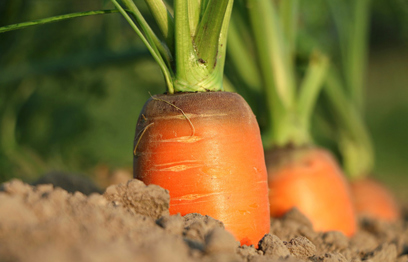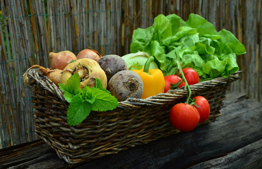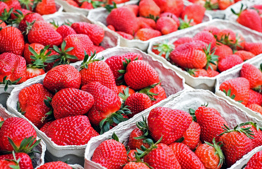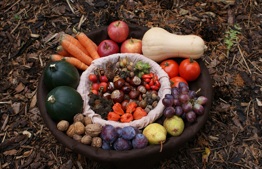Kilei Zera’im

A short and practical halachic guide on the main laws pertaining to kilei zera'im, the forbidden interplanting of seeds, relevant to anyone with a home garden.
Kilei Zera'im
”שדך לא תזרע כלאים” “You shall not plant mixtures of seeds in your field” (Vayikra 19:19). That is, there is a Biblical prohibition against planting two different types of seeds together (interplanting): grains, legumes, or vegetables.
The laws of kilei zera’im are detailed in the Mishna tractate Kila’im (chapters 1–3), Rambam (Hilchot Kila’im, chapters 1–4), and in the Shulchan Aruch YD §297.
Besides planting two different types of seeds together, it is forbidden to plant one species in close proximity to another, whether manually or by machine; whether in one’s own field, or in another’s.
This prohibition applies only within the Land of Israel, not abroad. However, one should be stringent in the Arava and Eilat areas since there is a doubt whether they are included in the boundaries of olei Mitzrayim.
It is forbidden for a Jew to interplant on a non-Jew’s property, nor can a Jew commission a non-Jew to interplant on a Jew’s property. However, a Jew can commission a non-Jew to interplant on a non-Jew’s property.
If one accidentally interplanted, one should uproot one of the species; it is forbidden to engage in activities that facilitate their growth (kiyum), such as: irrigation, fertilization, weeding, and building a fence. One who does so is liable for lashes.
However, produce that was grown in this forbidden fashion is actually permitted in benefit and consumption by anyone—even by a person who sowed it intentionally! It is even permissible to take seeds from produce grown as kila’im and sow them. I believe that this is the reason that much of the Torah-observant population is not familiar with the halachot of kilei zerai’m, since bedi’avad such produce is permissible to eat.
Necessary distances between different species
Different laws govern grains, legumes, and vegetables; the size of area sown is also a factor. Here we relate to small areas relevant to home gardens (not to farmers sowing in large fields, where the distanced are different).
Grains: Different grains should be distanced by 2 amot (96 cm according to Rav Chaim Na’eh); 1 ama (48 cm) is needed between a grain and a vegetable.
Legumes: There should be 1 ama (48 cm) separating different legumes, a legume and a grain, and a legume and a vegetable.
Vegetables: Most vegetables need a 1.5 tefachim (12 cm) separation.
The prohibition of kila’im applies in hothouses and indoors, as well as to unperforated pots (but only as an issur miderabanan).
In general, the types of forbidden produce are those worthy of human consumption, so kila’im does not apply to plants grown for use as medicine, for their pleasant scent, or for beauty. However, herbs (such as coriander and parsley) and tea leaves (such as mint, even though the mint leaves aren’t eaten) are subject to the laws of kila’im, since they are worthy of human consumption.
For this reason, when growing vegetables, herbs, or tea leaves in a planter at home or on the window sill, the proper distance needs to be maintained between the different types of plants (12 cm or a partition).
A planter is considered an independent entity, since it is distinctly separate from other plants. For this reason, it is fine to place two planters side-by-side with different types of plants, and no separation is necessary.
Today it is popular to sprout legumes at home for their high nutritional benefits. When sprouting different types of legumes on the same cotton tray, they should be separated by at least 12 cm. However, with home sprouting using only water (not done professionally, with no growing medium besides water), it is possible to be lenient and no distance is required.
For vegetables that spread out extensively (such as pumpkin, butternut squash, cucumber, squash, melon, and watermelon), the necessary distance is 2 amot in addition to the regular distance, according to Rav Yaakov Ariel. That is, one should separate a watermelon and a tomato patch by 108 cm (2 amot plus 1.5 tefachim). However, a watermelon and a cucumber patch need to be separated by 204 cm! (2 amot + 2 amot + 1.5 tefachim). I fully understood this halacha only after seeing watermelon and melon growing, where even one seed can take over all of its surroundings.
However, if the "spreading" vegetable was planted on a trellis - such that it does not spread out horizontally over the ground, but rather only grows upward - a normal separation of 1.5 tefachim (12 cm) is sufficient, and there is no need for a gap of 2 amot.
Similarly, if two "spreading" vegetables were planted on adjacent trellises, a gap of 1.5 tefachim (12 cm) between the two trellises is sufficient in this case as well.
According to most poskim, the issur with kilei zera’im is not that different seeds receive nourishment from the same soil, but that different species are seen growing in a mixture. So if there is a partition set up between them, such as a fence, it is permitted.
For more information, see Hilchot Ha’aretz pp.165–177.




